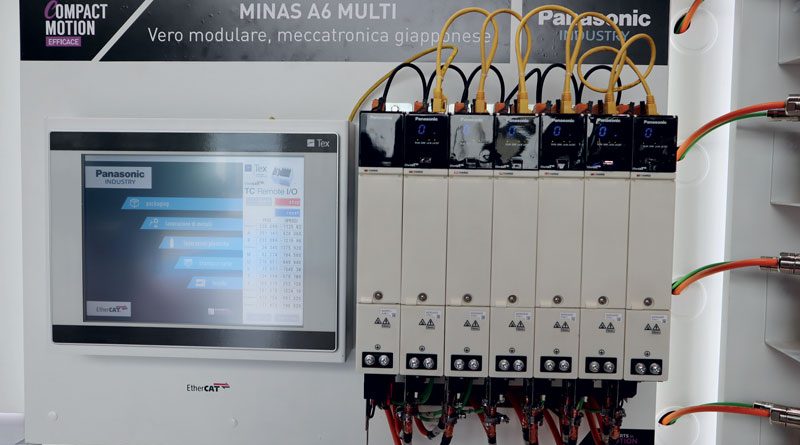The Compact and Performing Modular Servo Drive
Panasonic MINAS A6 MULTI, introduced as a world premiere at SPS Italia, is the new scalable 400 V servo drive which combines two concepts: scalability, which is typically European, and performance, typically Japanese. The system, designed to reduce floorspace of the control panel by 64%, is thought indeed for machine manufacturers, also in the assembly sector, searching for high performances and power as well as compact design.
by Silvia Crespi
Panasonic, the Japanese company specializing in solutions for industrial automation took part in he 2019 edition of SPS Italia and introduced, as a world premiere, the new scalable 400 V servo, MINAS A6 MULTI, on a double-axis scalable platform, developed to minimize the floorspace and increase performance. The system is conceived for industries such as packaging, assembly or metal machining, for instance, or rather for all those sectors whose machines require high performances and power as well as compactness.
By means of a single power module it is possible to use several drivers. The floorspace of the control panel is thus reduced by up to 64%; drives are connected to one another by means of a DC bus connection system with frontal assembly, without screws, to allow an immediate and fast installation. Thanks to an exclusive control algorithm, the servo’s response is rapid and precise. The simple and remote management (EoE – Ethernet over EtherCAT) and high-speed communication are ensured by means of the EtherCAT connection.
MINAS A6 MULTI integrates 14 advanced safety motion functions, therefore it does not require external safety components, an aspect which reduces costs and allows to save space in the production plant. Particularly important for some applications is the perfect unbalance of the axes; with the same driver 2 servomotors of different sizes may be controlled, and this optimization brings flexibility to the machine’s design.
Versatility for manufacturers as well as end users
“MINAS A6 MULTI is the first model of servo drive which combines two concepts: scalability, which is typically European, and performance, typically Japanese”, says Giuseppe Zampolli, Product Manager Control & Drives at Panasonic. “The layout completely fulfills the demands of European machine manufacturers who use 400 V modular, bi-axis motors: by means of a DC bus, some more modules are added to a first power segment, where each additional module drives two motors. The peculiarity of the system lies in the fact that the two motors may be unbalanced. This means that, within a predefined power range, they may be of different sizes, which provides maximum versatility to the manufacturer as well as to the end user. Even other properties contribute to versatility: from standard connectors, to the DC bus, right up to the possibility of controlling and managing parameters remotely using the web. Everything which was already present in MINAS A6 in its stand-alone version has been brought into the new scalable product which also includes increased performances”.
According to Mr Zampolli, another very important aspect for several European manufacturers is provided by the reduction of horizontal floorspace within a control panel. The new engineering of the servo drive was designed by the Italian and Japanese R&D team in synergy. The company envisages beginning mass production by the end of the year.
Data from the field to the upper level
Another new product introduced at SPS by Panasonic, as a European premiere, is the FP I4C IIoT intelligent gateway which responds to the need to capture and transport data to higher corporate levels, that is, where information useful for management decisions are processed.
“Let’s imagine a machine manufacturer who has an already built plant but aims to enhance it by means of IoT functionalities”, explains Mr Zampolli. “By simply integrating the FP I4C, it is possible to safely share data on external devices provided by the customer, also processing them in order to take some business decisions, thus making production process digitized”.
Something new was introduced even in the sensor domain: thanks to the IO-Link, the new sensors have a digital bus, diagnostics for preventive maintenance (for instance, working life of the sensor or short-circuit control) as well as the possibility of configuring the sensor remotely for remote assistance or rather to facilitate the test phases.

